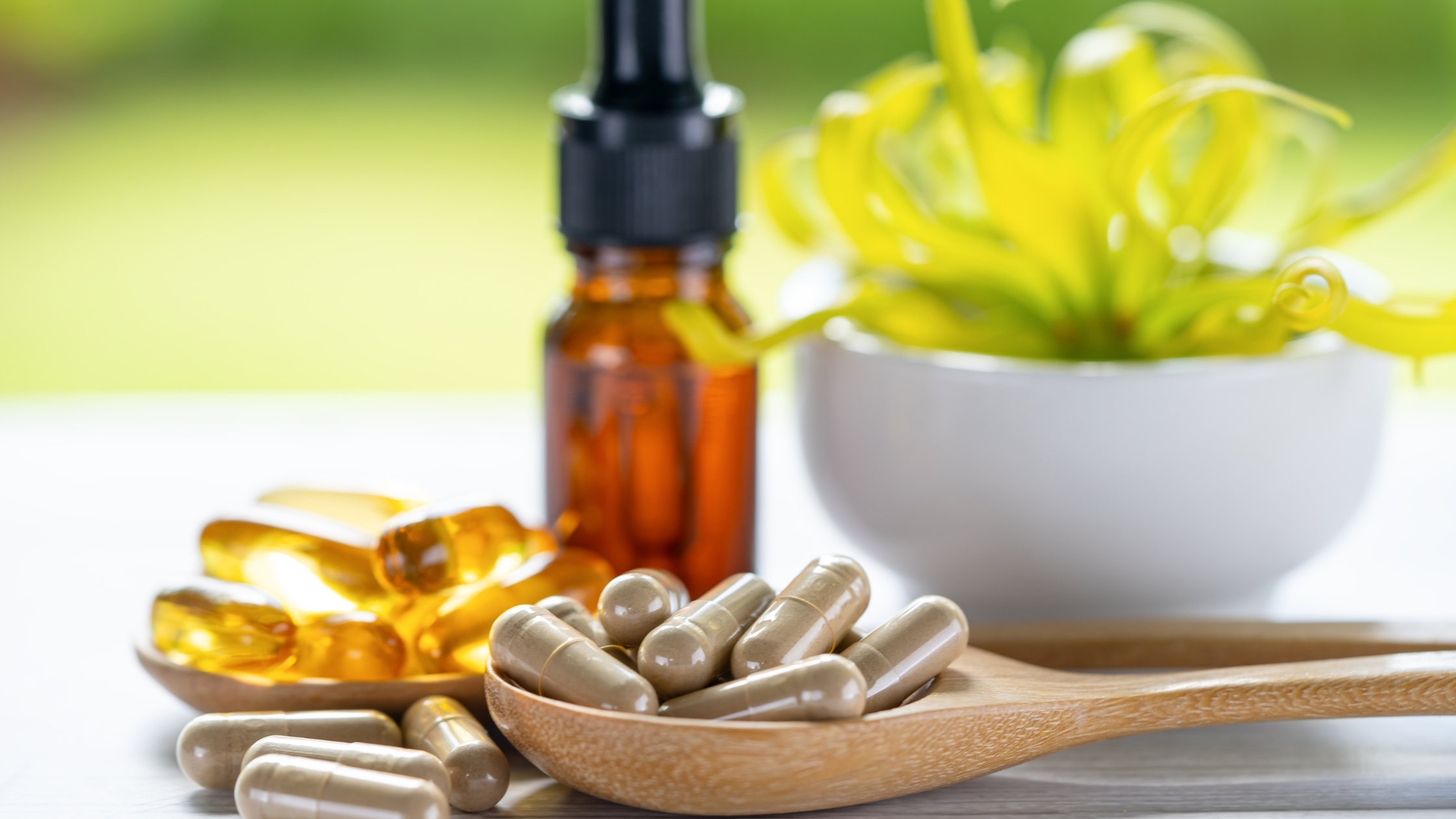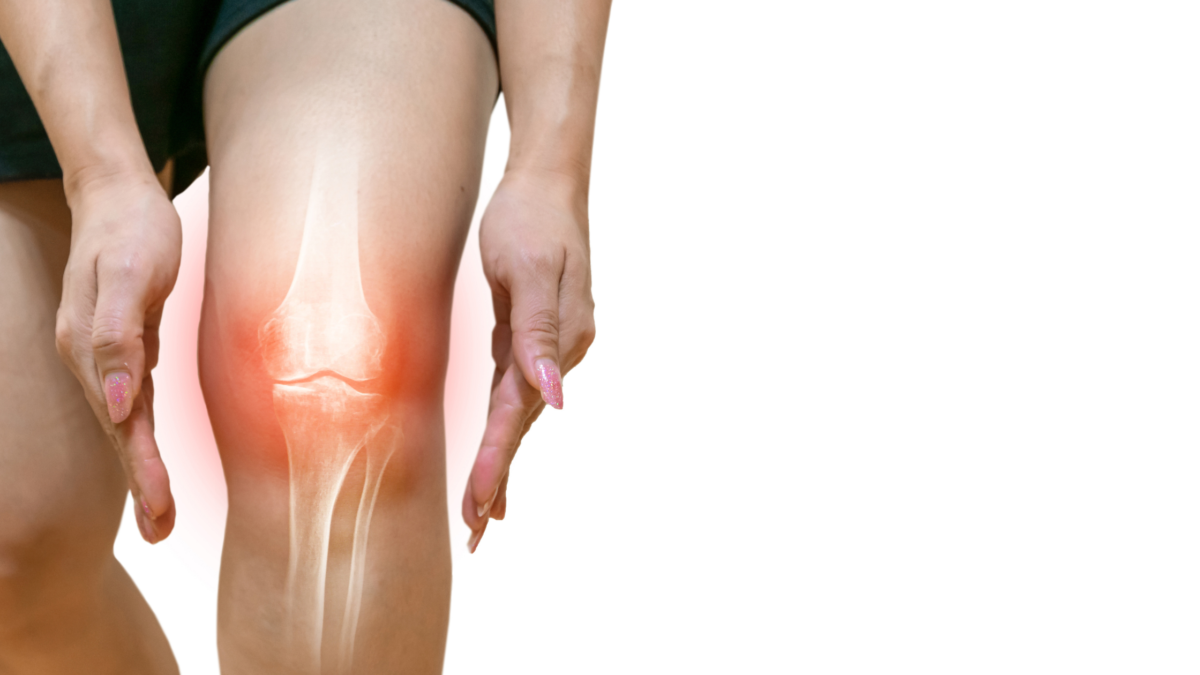


Medically Reviewed By Margaret Etudo. Written By The Vitamins For Woman Team.
Discover how centuries-old herbal remedies can ease inflammation, improve mobility, and complement your arthritis treatment plan naturally.

Joint pain can creep into your life quietly, starting as morning stiffness in your knees or fingers and progressing into chronic discomfort that affects everything you do.
Whether caused by arthritis, age-related cartilage wear, or inflammatory autoimmune conditions, joint pain often requires long-term management.
While pharmaceuticals like NSAIDs and corticosteroids can provide temporary relief, many people seek natural remedies to complement their treatment or reduce reliance on medications with harsh side effects.
Herbs for joint pain have been used in Ayurvedic, Chinese, and traditional Western medicine for centuries.
These plants contain active compounds that reduce inflammation, alleviate pain, and support joint health.
This article examines why herbs are effective for alleviating joint pain and provides guidance on their safe use to help regain mobility and live more comfortably.
Explore the science behind anti-inflammatory herbs and learn how they compare to pharmaceutical treatments for managing chronic joint pain effectively.
Joint pain is often caused by inflammation, a natural immune response to injury or infection.
In conditions such as osteoarthritis or rheumatoid arthritis, however, chronic inflammation damages cartilage and surrounding tissues, resulting in pain, swelling, and stiffness.
Herbs are effective in relieving joint pain because they contain plant-based compounds such as flavonoids, polyphenols, and terpenes. These compounds:
For example, curcumin in turmeric blocks nuclear factor-kappa B (NF-κB), a molecule involved in inflammation pathways, while boswellic acids in frankincense suppress leukotriene synthesis, reducing inflammation and pain.
Research shows that the use of herbs like turmeric, ginger, and Boswellia is an effective natural remedy for arthritis pain, particularly when combined with an anti-inflammatory diet rich in plant-based healthy snacks and high-fiber foods for healthy joints.
Pharmaceutical pain relievers remain the first-line treatment for many joint pain sufferers. However, long-term use carries risks that herbs may help mitigate.
Herbs provide anti-inflammatory effects without the harsh side effects associated with NSAIDs, such as stomach ulcers, kidney damage, or cardiovascular risks.
On the flip side, herbs generally act slower than medications and may not suit acute pain flares.
They also carry their risks if misused, especially regarding dosage or interactions with prescription medications.
Understanding these pros and cons enables you to safely integrate herbs into your joint health regimen for lasting relief.
These ten natural remedies have been scientifically studied for their ability to reduce inflammation, alleviate pain, and support healthier, more mobile joints.
Turmeric is a powerful herb that helps alleviate joint pain and is widely used in Ayurveda. Its active compound, curcumin, reduces inflammation by blocking NF-κB and COX-2 enzymes.
Studies show that 500–2,000 mg of daily supplementation can significantly alleviate arthritis pain and stiffness.
For best results, take turmeric with black pepper extract to boost absorption. Choose supplements standardized to 95% curcuminoids or enhanced formulas, such as Meriva.
While adding turmeric to meals or herbal teas is beneficial, supplements provide more substantial therapeutic relief.
Boswellia serrata, known as frankincense, contains boswellic acids that reduce inflammation by inhibiting the 5-LOX enzyme.
Research shows that 100–250 mg administered twice daily can improve pain and mobility in osteoarthritis patients within weeks.
Look for extracts standardized to 30–40% boswellic acids for effectiveness. Boswellia is generally safe and works well in conjunction with turmeric to enhance joint pain relief, minimizing harsh side effects.
Ginger is another herb used for joint pain, boasting strong anti-inflammatory effects due to its gingerols and shogaols.
Studies show that taking 500–1000 mg daily can help reduce osteoarthritis pain and improve mobility.
It can be consumed as tea, in meals, or as supplements. Ginger also improves circulation, warming joints and relaxing surrounding tissues, making it a comforting addition to your daily routine.
Willow bark (Salix alba) contains salicin, the precursor of aspirin. This herb has been used for centuries in Europe and China to alleviate joint and back pain.
Research revealed that 240 mg of willow bark extract daily reduced pain scores in osteoarthritis patients by up to 30% compared to placebo.
However, it should be avoided in people allergic to aspirin or those with bleeding disorders.
Native to southern Africa, Devil’s Claw (Harpagophytum procumbens) has potent anti-inflammatory and analgesic properties.
Its iridoid glycosides inhibit COX-2 and nitric oxide production, alleviating pain.
The analysis found that 50-100 mg of harpagoside administered daily reduced knee and hip osteoarthritis pain, improving mobility and joint function over 4– 12 weeks.
Cat’s Claw (Uncaria tomentosa), used traditionally by indigenous Amazonian tribes, reduces inflammation by inhibiting TNF-alpha and other pro-inflammatory cytokines.
Clinical studies suggest that it may relieve joint pain and swelling associated with rheumatoid arthritis.
However, it can interact with immune-suppressing medications and should be used under medical supervision, especially in autoimmune conditions.
Stinging nettle (Urtica dioica) is rich in flavonoids, vitamins, and minerals that reduce inflammation and strengthen connective tissues.
Several European studies have demonstrated that consuming freeze-dried nettle leaves or applying nettle compresses to painful joints can effectively alleviate discomfort.
Including nettle tea as part of your herbal teas for joint pain regimen also provides minerals like magnesium and calcium that support bone density.
Licorice (Glycyrrhiza glabra) mimics the effects of corticosteroids by reducing inflammation and modulating immune activity.
It is often used in combination with other herbs for joint pain in Chinese and Ayurvedic formulations.
However, long-term use can lead to sodium retention and potassium loss, potentially causing high blood pressure; therefore, it should be used with caution.
Ashwagandha (Withania somnifera) is an adaptogenic herb that is known to reduce inflammation and stress-related cortisol spikes, both of which can exacerbate joint pain.
Studies have shown that 250-500 mg of ashwagandha extract daily can reduce pain and improve physical function in patients with arthritis.
This Ayurvedic herb is also beneficial for hormonal balance, supporting women’s health alongside bone-support vitamins.
Yucca schidigera, traditionally used by Native Americans, contains saponins with anti-inflammatory and antioxidant properties that help alleviate arthritis symptoms.
Although research is limited, anecdotal evidence suggests that it may be used as a natural remedy for joint pain.
Using herbs for joint pain effectively requires knowing the correct forms, dosages, and safety precautions to achieve long-term relief without adverse effects.
Herbs for joint pain can be consumed in various forms:
When selecting herbal supplements, always choose organic herbs for inflammation from trusted brands that test for purity, contaminants, and correct botanical identification.
While herbs are natural, they can still cause side effects or interact with medications. For example:
Consult your doctor or an integrative health practitioner before starting any herbal regimen, especially if you are pregnant, breastfeeding, have chronic health conditions, or take prescription medications.
Among the many herbs used for joint pain, turmeric (containing curcumin) and Boswellia stand out as the most potent anti-inflammatory herbs, supported by extensive clinical research. Both significantly reduce pain and improve joint function in arthritis patients without the gastrointestinal side effects associated with NSAIDs.
Herbs generally take 2–8 weeks to produce noticeable results, depending on the herb, dosage, severity of your joint condition, and your body’s absorption rate. Consistent daily use, combined with a diet rich in high-fiber foods, helps maintain healthy joints and enhances effectiveness over time.
Herbs for joint pain can significantly reduce symptoms and improve quality of life, but they should not be viewed as direct replacements for prescription medications without medical supervision. Some people can reduce their medication dose under a doctor’s guidance, while others find herbal remedies work best as complementary support alongside standard treatments.
Nature offers a powerful arsenal of herbs for joint pain, including turmeric and Boswellia, as well as lesser-known remedies such as Devil’s Claw and Cat’s Claw. These plants work by reducing inflammation, alleviating pain, and supporting overall joint health in ways pharmaceuticals often cannot match.
Before incorporating herbal remedies into your regimen, consult your healthcare provider to ensure safe integration with any current treatments. Combined with bone-support vitamins, plant-based healthy snacks, and anti-inflammatory lifestyle choices, these natural remedies can help you move more freely and live with less pain each day.

medically reviewed by margaret etudo, BPharm. written by the vitamins for woman team.